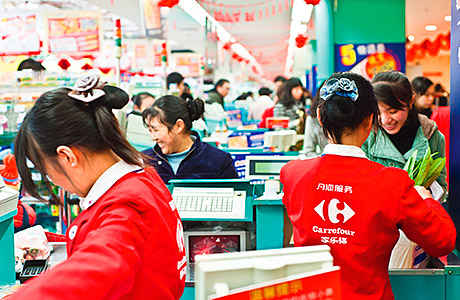China is becoming a key market for food packaging suppliers, as a transition from traditional shops to Western-style supermarkets gathers pace. Two recent market research reports highlight opportunities and potential pitfalls.

IN recent years, China has seen significant changes in eating habits, shopping behaviours, and lifestyle habits, as consumer behaviour responds to Western influences. Consumer packaged goods providers will capitalise on the trend of Westernisation for new experiences and integrate more Western groceries onto their shelves, suggests a report from market research company Canadean.
As the Westernisation of the retail market is fairly new, products that are considered to be mid-range are more likely to be offered as premium products in China. Western commodities also serve as symbols of modernisation and provide a sense of elevated status for consumers. As a result, Western brands of products such as fragrances, chocolates, coffee, cheese, ice cream, and carbonated soft drinks are becoming prevalent in Chinese retail markets.
Supermarkets offer greater choice
A typical Chinese supermarket in a developed urban area will stock more varied products in comparison to an equivalent US or Japanese store, thus increasing the choice available and offering more opportunities to choose Western products. Domestic companies need to match the standards of Western packaging so they stand out against their counterparts.
WESTERN BRAND FAILURES
According to Catherine O’Connor, senior analyst at Canadean: “Despite China’s growing interest in Western brands, foreign offerings do not always find it easy to integrate into the Chinese retail market. Earlier this year, Revlon and L’Oréal both pulled back from China, misunderstanding the needs of this lucrative market.” Consumer Packaged Goods’ (CPG) providers will attract more custom by localising products to Chinese tastes, for example, KFC has introduced a range of breakfast soups, and Oreos are altered in China to have flavours such as green tea, as consumers found the originals too sweet.
As well as reformulating products for the Chinese market, companies need to modify packaging to influence them at the shelf edge. O’Connor explains: “In particular, the use of colours is of paramount importance for the Chinese.
Yellow is seen as a royal colour and red is chosen for good luck and happiness. However, these bright colours are mostly preferred for food products, while pastel or white shades are preferred for household items and personal care products.”
China is fast becoming a priority market for food packaging suppliers, says another recent report by market intelligence company Smithers Pira.
A transition is currently underway from traditional shops to Western-style supermarkets and packaged food, and Beijing is making a conscious effort to cut red tape.
The Chinese food packaging market rose from almost $18 billion in 2007 to over $33 billion in 2012. This market will continue to expand at a compound annual growth rate (CAGR) of 7% over the next four years. Drinks packaging will rise at a CAGR of 8% until 2018, driven by increased consumption of plastic and canned beverages. The Chinese market for food and drinks packaging will rise to $50 billion and $17 billion respectively over five years.
Food packaging materials are now the responsibility of a single body in this region: the China Food and Drug Administration (CFDA), founded in March 2013. The CFDA is now compiling its own list of substances approved for domestic use. Under the new streamlined rules, an application for approval of a new substance should take around one year to complete.












